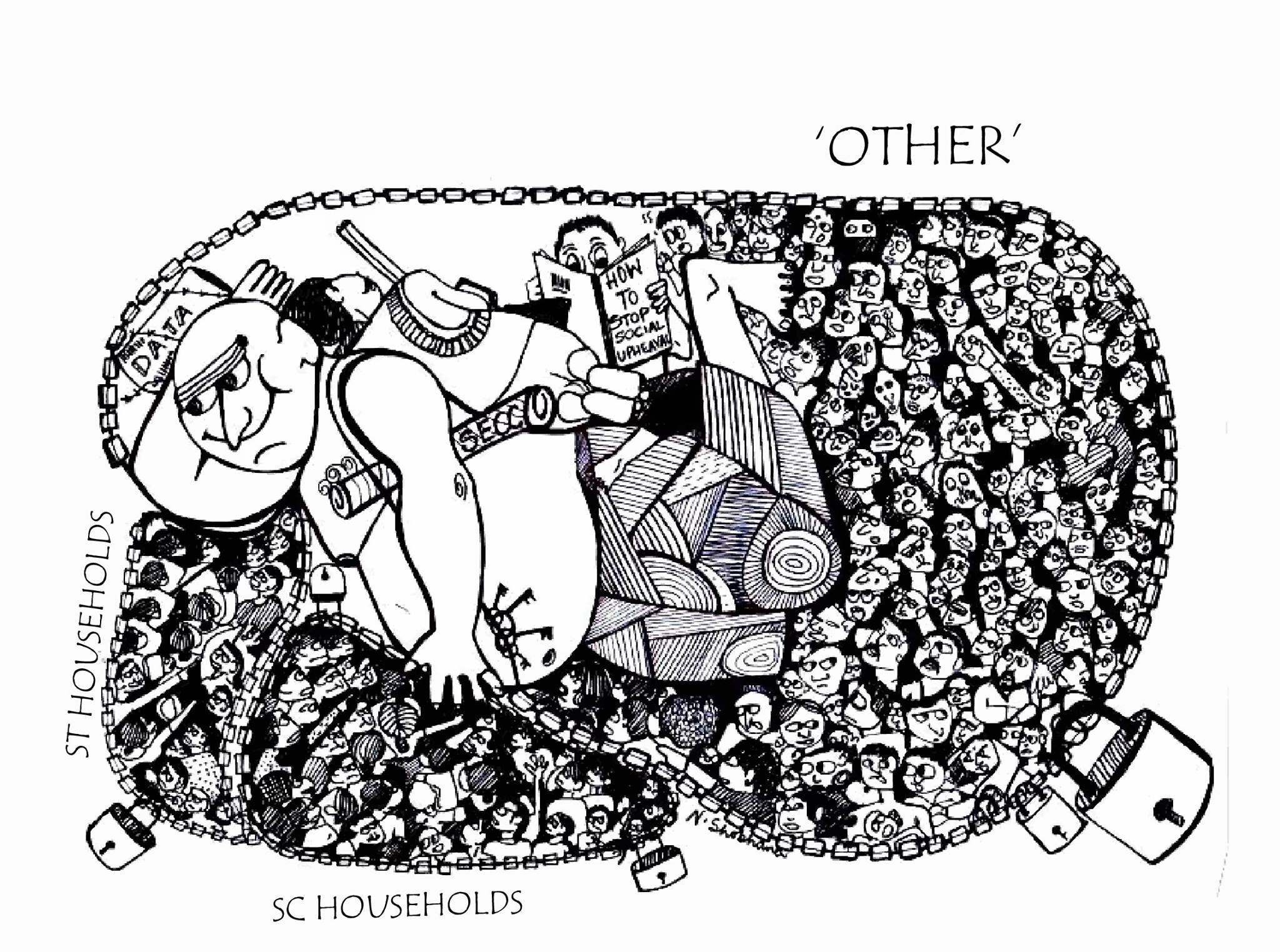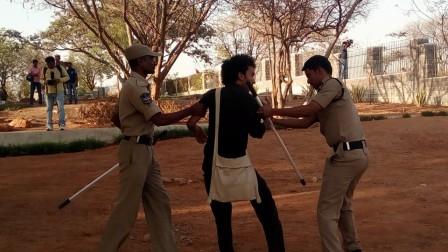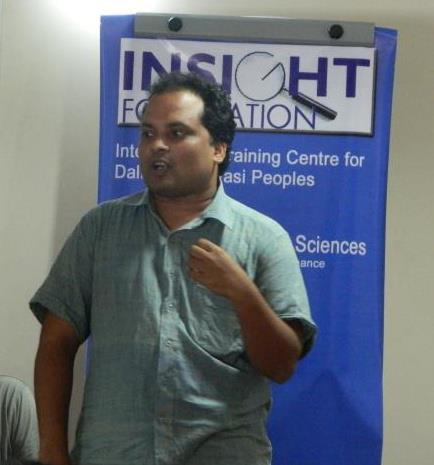Kuffir
How are you going to break up Caste, if people are not free to consider whether it accords with morality? ~ Babasaheb Ambedkar
The saddest joke is Modi’s promotion of a cash-less economy among the ‘poor’. To add insult to injury, the Congressis and the left have again been strengthening the tired narrative of a homogenous, caste-less community of ‘poor and middle class’ Indians as though they are all uniformly affected by the currency drought reigning across the country. Here’s an attempt to explain how both are lying: the ‘poor’ in India already live in a cash-less economy or a less cash economy, and they’re overwhelmingly Bahujan.
This financial year, 2016-17, it is estimated that all Indian households would spend around 89 lakh crore rupees on consumption (or Rs 24,400 crores approx, per day). How much of this would be the Bahujan share? To arrive at that figure, we need to calculate how much does the Bahujan spend, which is a very difficult task but we do have the means to arrive at a reasonable estimate now, thanks to the truncated but nevertheless somewhat useful caste census.

After the Tendulkar Committee eliminated Bahujan bodies (or the criteria of calories consumed) from their primacy in computations of poverty, the Rangarajan expert group was appointed in 2012 to exhume them and re-examine and re-map what must be one of the world’s most disputed borders, the poverty line. The Rangarajan led expert group suggested a daily expenditure limit of Rs 32 for rural areas and Rs 47 for urban areas (while the Tendulkar Committee had prescribed Rs 27 and Rs 33 respectively). Neither group admitted poverty in India is anywhere above 30% – the Tendulkar Committee said it was around 22% while the Rangarajan group pegged it at 29.5%.
Just a year before the Rangarajan expert group was constituted, the process of the 2011 caste census had got underway. The SECC 2011 (Socio-Economic Caste Census-2011) threw up a fresh set of numbers: one statistic was interpreted to highlight that around 670 million people in rural india lived on less than Rs 33 each, per day, in the year 2011. Just this rural ‘poor’ population figure is more than double the Rangarajan expert group’s estimate which had based its calculations on the basis of a per person daily expenditure of Rs 32, a rupee lower than Rs 33. So much for Brahminized committees and expert groups: can you find a bigger reason for a proper Caste Census? For those interested, here’s Rangarajan and Mahendra Dev’s explanation for the discrepancy, and that definitely deserves another article to examine its biases.
So now we have a figure, verified more or less by more than one authority group including the Planning Commission, for how much the rural Bahujan spends every day: Rs 33. And how much does the urban Bahujan spend? Let’s say Rs 47, like Rangarajan in his report submitted in 2014. Given that figure, how much cash would the 670 million rural Bahujans require every day? Rs 2211 crores.
How much cash would the urban Bahujans need every day? This is slightly tricky and requires some reasonable assumptions. When Rangarajan says that 260.5 million individuals in rural India live on less than Rs 32 a day, the actual figure turned out to be 670 million. Similarly, when he says that around 102.5 million individuals in urban India live on less than Rs 47 a day, it is reasonable to assume that the actual figure must be around 262 million* (102 million X 670/260).
How much of cash do these 260 million (rounding off) urban Bahujans need every day? Rs 1222 crores. Summing up, all the Bahujans across the country need around Rs 3433 crores of cash (Rs 2211 crores + Rs 1222 crores) every day.
Apart from the Bahujans (670 + 260 = 930 million), how much cash would the ‘others’ or rest of Indians or Brahmins, upper castes to put it plainly, (1210 – 930 = 280 million) need every day? Rs 20967 crores. Or over 6 times what the Bahujans need every day!
Think of this: every Brahmin or upper caste individual, on an average, spends (739 rupees) nearly 20 times more than what every Bahujan individual spends every day (37 rupees)!
So why are the Bahujans, with the least stake in cash, suffering the most? Around 6 times more than the rest?
The Telugu poet Wilson Sudhakar Thullimalli had once observed that the IITs produce ‘export quality coolies’ for the American economy, especially its information technology sector. The same kind of dependency marks the relationship between the Bahujans and the Brahmins, upper castes in India’s political economy. Why does the IT export coolie suffer from shivers every time the American economy wipes its nose?
If automobile sales fall by around 30%, if garments sales fall by around the same percentage, if footwear sales fall by around 25%, if the sales of even everyday consumables like tea, toothpaste and soaps fall, sales of books fall by over 60%, and above all, if the sale of the much bandied totem of modinomics, the mobile phone, falls by over 50%, the Bahujan would be hit the most even though he is not the one, mostly, who is directly employed by the companies which produce those goods.
The simple reason is: the Bahujan in India is almost totally dependent on the Brahmin-upper caste consumer for his sustenance. The terrible irony is that he can eke out his bare existence only if the Brahmins-upper caste consumer continues to consume several times, around 20 times individually, more than him.
The Bahujan is the primary producer, worker, organic engineer of all the millions of raw or unfinished or semi-finished goods and intermediate processes and finishing services which go into the making of all the ready-to-consume manufactured goods and services mentioned above, which the Brahmin, upper castes consume, primarily.
It would seem like his whole life is geared to serve the Brahmin, upper caste consumer, who of course remains the consumer more than anything else, that’s his primary function in Inda’s political economy. While the Bahujan is still the shudra who serves the Brahmin and other higher varnas. If the Brahmin doesn’t consume, it is the Bahujan who is made to starve.
As pointed out earlier in this article, Marx could have said: in India, consumption, without caste, would have no object, and production, without caste, would have no subject.
While Marx saw class rule as unjust, Ambedkar saw it as immoral. Capitalism is private ownership and control over socialised production, but in India it amounts to caste ownership and control of socialised production because all the brahmin-savarna upper castes can and do lay claim to it, and consume most of it, ultimately. Under this caste mode of production, the burden on the Bahujans is therefore much more complicated, as is the solution.
The implicit lie in Modi’s promotion of cash-less options among the poor attempts to conceal the fundamental reality that it is the Brahmins, upper castes who consume, or gorge on to be more precise, cash, like every other resource of the land, the most. For the Bahujan, the distance between possession of cash and cashlessness is very, very thin as we can see now. As cash dries up, the Brahmins, upper castes suck up more and more of what’s available, leaving the Bahujan dry.
Why do the Brahmins, upper castes use cash so much? Cash invisiblises the predatory nature of their relationship with the Bahujans, because it doesn’t leave a verifiable footprint. Any cash-less, electronic trail would at least reveal a hazy picture of the primordially skewed bond between the two.
Now the second lie about how the ‘poor’ in India are caste-less. Throughout this article, why are the poor being referred to as ‘Bahujans’? Aren’t there any poor people among the upper castes? Sure there are. You’ll find them if you look hard enough, with extreme determination and diligence. Like the current Vice Chairman of Modi’s NITI Aayog Arvind Panagariya did a couple of years ago.
He discovered that the ‘forward caste’ (Brahmins, upper castes) population in India was around 28%, and 12.5% of them lived below the poverty line (as defined by the Tendulkar Committee which he seems to agree with). You may wonder, forget the all India figures, in which state does he find that the ‘forward castes’ have a 28% share in population? Uttarakhand?
Anyway, if we ignore the irrationality of the figure for the moment, and take it as factual, the Brahmins, upper castes population in India in 2011 would be 33.88 crores. And the population of the ‘forward castes’ below the poverty line (12.5%) would come to around 4.23 crores.
If these 4.23 crore, or 42.3 million, forward caste individuals are included among the 930 million Bahujans who live on less than Rs 33 a day in rural india and Rs 47 in urban India, they don’t negate the Bahujan character of the group. Because they’ll constitute only a 4.5% share of the category, nearly 95.5% of these individuals will still remain OBC, SC, ST across all faiths, or Bahujans collectively. The Bahujan character of the group wouldn’t change even if the number of forward caste poor was twice as much as 4.23 crores.
Also, it is very likely a major part of these 4.23 crores are OBCs who have been wrongly classified among forward castes. That is very logical because the very same agency that produced the data that Panagariya uses, NSSO, had pegged the OBC population in 1999 as 32% (which Panagariya now puts at 44%).
Finally, as Babasaheb said, it all boils down to a question of morality. Whether it is Panagariya from Columbia University and NITI Aayog and other high places, or Rangarajan from RBI and other high places, or Tendulkar from the Planning Commission and other high places, and scores of others – politicians, journalists, civil society activists, leftists, centrists, socialists, communists and above all the Sangh parivar – and all the institutions they run were free of caste, their perspective on everything would have been radically different.
They would have noticed the plainly immoral nature of the exploitation and dehumanisation of the Bahujan. They would have accepted that caste ties up the Bahujan and enables the Brahmins, upper castes to suck his blood, unhindered, like leeches. That’s where they would have started studying poverty, deprivation, marginalisation etc. Not juggling numbers to come up with aseptic ‘below poverty line’ figures, shorn of all politics.
* This is a reasonable assumption, as pointed out. It wouldn’t radically alter the conclusions drawn if the figure was higher, or lower.
..to be continued
~~~
Drawing by Nidhin Shobhana










